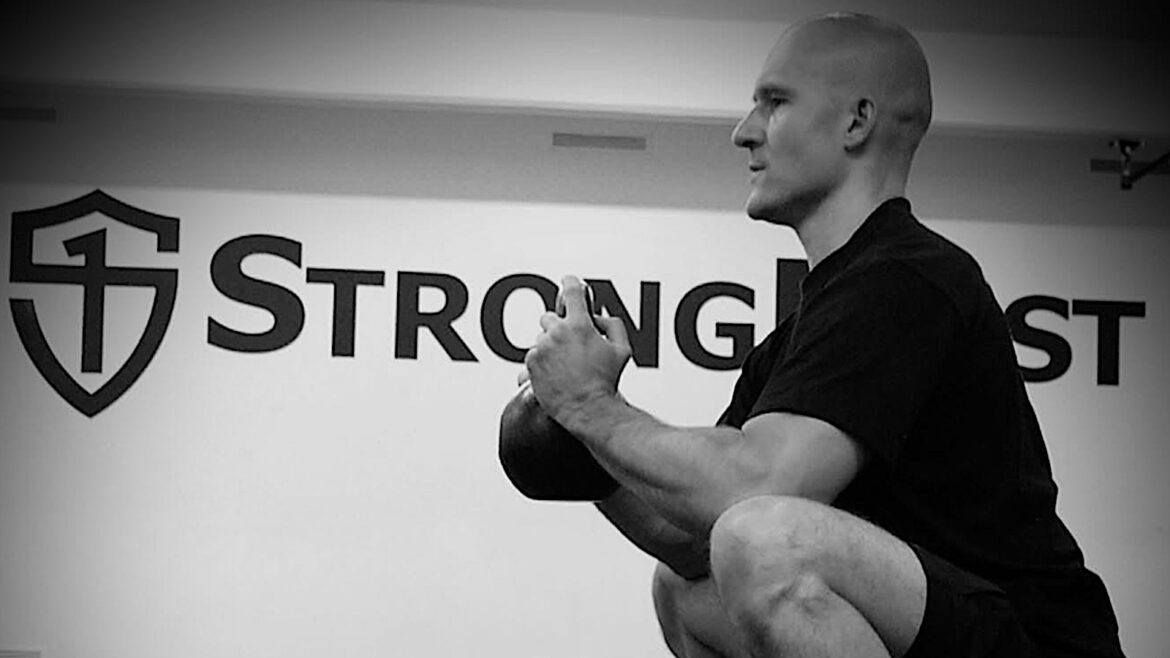Improve your mobility with this squat variation.
As we age, stiffness and reduced mobility can hinder performance. Fascia squats are a variation that can restore muscle elasticity and balance. Fitness trainer Jack Thompson outlined three core aspects to perform the fascia squat.
How to Fascia Squat
- Proper foot alignment
- Shifting body weight to the center of mass
- Using feet as a springboard
Fascia is a stretchy tissue that covers muscles. When fascia loses elasticity, you lose spring in your movement.
—Jack Thompson
Fascia Squats Explained
Think of fascia as the body’s connective tissue network. It wraps around and supports muscles, tendons, bones, and organs, akin to the thin film on a chicken breast right before you cook it. As we age, fascia loses elasticity, which can affect movement and lead to weakness or pain. (1)
“If you’re over 50, building elasticity with fascia-strength exercises can be life-changing,” Thompson expressed. “The key is to treat this unique strength training like a skill.”
3 Steps to Fascia Squat
Unlike a traditional squat, the fascia squat focuses on bouncing lightly through the balls of your feet to wake up connective tissue and restore movement elasticity.
Alignment
Position the feet wider than shoulder-width apart with toes slightly angled out. Keep the upper body upright and avoid bending at the waist to reduce lower back strain. Imagine stacking the torso so your center of gravity aligns over the mid-foot.
Push off and land on the balls of your feet, not your heels, with about 70% of your body weight. This force promotes elasticity by stimulating fascia tissue. (2)
Research supports muscle elasticity and flexibility can lead to a greater range of motion (ROM), paving the way for strength adaptations and boosts in performance. (3) Studies consistently show that increased ROM is associated with enhanced hypertrophy. (4)
Start with five reps and progress to 10–25 as your rhythm develops. “As you get better at those three steps and they become natural, you can start doing more reps,” Thompson recommended.
The fascia squat can improve mobility and reduce muscle tension. The goal is fluid, elastic movement to remain pain-free.
More Training Content
References
- Zullo A, Fleckenstein J, Schleip R, Hoppe K, Wearing S, Klingler W. Structural and Functional Changes in the Coupling of Fascial Tissue, Skeletal Muscle, and Nerves During Aging. Front Physiol. 2020 Jun 24;11:592. doi: 10.3389/fphys.2020.00592. PMID: 32670080; PMCID: PMC7327116. https://pmc.ncbi.nlm.nih.gov/articles/PMC7327116/
- Kondrup F, Gaudreault N, Venne G. The deep fascia and its role in chronic pain and pathological conditions: A review. Clin Anat. 2022 Jul;35(5):649-659. doi: 10.1002/ca.23882. Epub 2022 Apr 27. PMID: 35417568. https://pubmed.ncbi.nlm.nih.gov/35417568/
- Alizadeh S, Daneshjoo A, Zahiri A, Anvar SH, Goudini R, Hicks JP, Konrad A, Behm DG. Resistance Training Induces Improvements in Range of Motion: A Systematic Review and Meta-Analysis. Sports Med. 2023 Mar;53(3):707-722. doi: 10.1007/s40279-022-01804-x. Epub 2023 Jan 9. PMID: 36622555; PMCID: PMC9935664. https://pubmed.ncbi.nlm.nih.gov/36622555/
- Schoenfeld BJ, Grgic J. Effects of range of motion on muscle development during resistance training interventions: A systematic review. SAGE Open Med. 2020 Jan 21;8:2050312120901559. doi: 10.1177/2050312120901559. PMID: 32030125; PMCID: PMC6977096.https://pubmed.ncbi.nlm.nih.gov/32030125/
Featured image: @pavelmacekcom on Instagram
